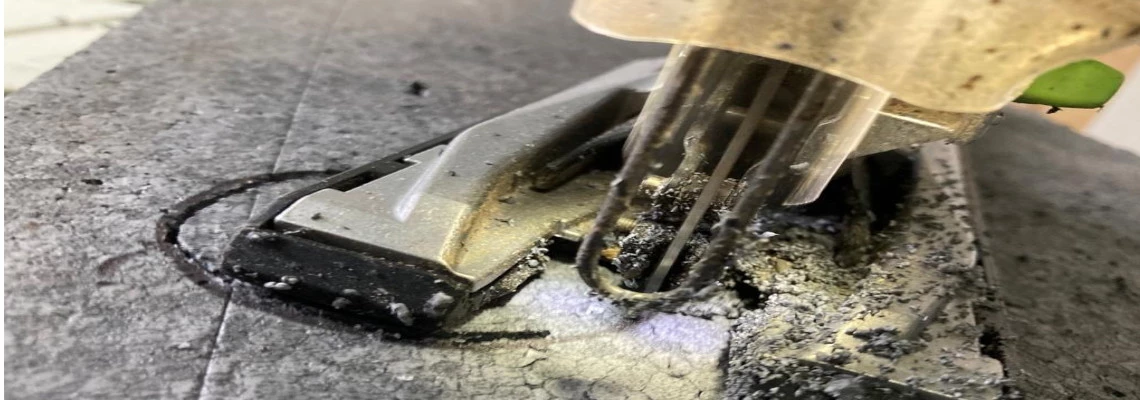
THE ULTIMATE GUIDE HOW TO CUT POLYSTYRENE*
Polystyrene also called ‘Jablite’ or ‘Styrofoam’ is widely used in the building construction industry because it is so versatile. It can be used to insulate floors, insulate concrete forms or blocks, structurally insulated panels known as SIP’s and most importantly on External Insulation Systems (EWI) such as K-Rend thin coat. The EPS board may seem like a simple EWI insulation material but in reality, it is strong and can be tricky to cut if you don’t know the right techniques. The ease of cutting polystyrene is determined by its hardness, i.e. compressive strength. The higher its compressibility, the harder it is to cut it - in theory. But do not worry. This thermoplastic foam material is made of 98% air and just 2% plastic. Cutting such material is not a rocket since. Mind you, cutting the air never was hard:). However, incorrectly cut polystyrene sheets may consequently lead to thermal bridges. Moreover, due to the specific structure of the polystyrene, the use of an incorrect tool may cause it to crumble, and thus damage the board to such an extent that it becomes unusable. Cutting EPS with the wrong tool can also result in a fractured or broken edge. Therefore it is important to pay close attention to this process. By the end of this article you will have everything you need to know and all the tools that you need to buy to cut polystyrene like a true professional.
Whether you are looking to cut expanded polystyrene quickly or do it without making a mess, we’re going to explain various methods you can use to achieve your desired effect. Generally speaking, polystyrene can be cut either mechanically, by hand saw, jigsaw or thermally, by hot wire cutter.
 TABLE OF CONTENTS
TABLE OF CONTENTS
THE ULTIMATE GUIDE TO CUT POLYSTYRENE SHEET
CUTTING WHITE AND GREY POLYSTYRENE SHEETS
CUTTING POLYSTYRENE WITH A HAND SAW
CUTTING POLYSTYRENE WITH HOT WIRE CUTTER
CUTTING POLYSTYRENE WITH THE LONG BLADE UTILITY KNIFE
CUTTING POLYSTYRENE WITH A JIGSAW
HOW TO CUT HOLES IN POLYSTYRENE?
WHAT HAPPENS IF I CUT POLYSTYRENE TO BIG?
WHAT HAPPENS IF I CUT POLYSTYRENE TO SHORT?
HOW TO FINISH POLYSTYRENE EDGE?
CUTTING WHITE AND GREY POLYSTYREEN SHEETS
Expanded Polystyrene is offered in different grades and colours of material that affect its thermal performance. While both are polystyrene products and are used for some similar applications, that is where the similarity stops. White EPS, while still offering a high thermal performance, requires slightly thicker levels to achieve the same thermal performance as graphite-enhanced grey EPS. Therefore it needs to be thicker material. Cutting thicker material requires more man power and longer blades to be used. Moreover, white polystyrene is easier to electrify, which makes it very easy to stick to your hands during cutting. However, cutting graphite polystyrene shouldn’t take longer to cut.
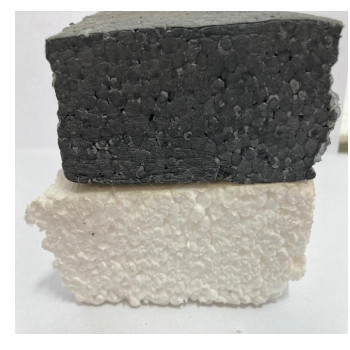
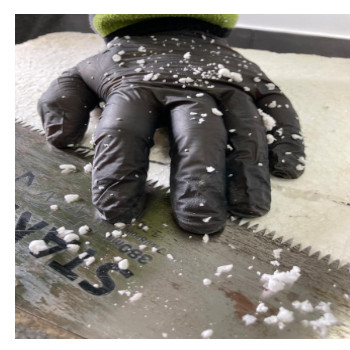
CUTTING POLYSTYRENE WITH A HAND SAW
The most popular and effective method of cutting polystyrene is its mechanical cutting with a hand saw. In fact, hand saws are often used for either plastic or wood. They cut using both the push and pull stroke. A hand saw is the best option because it provides a good grip and control. A fine-toothed saw works best for precision polystyrene cutting. For their blades, polystyrene basically generates no resistance. The whole process of cutting EPS with a hand saw is smooth and hassle-free. The hand saw cost £12-15 and is very light and easy to use. When you don’t use it, you can stick into the gap between polystyrene sheets.
CUTTING
Expanded polystyrene board should be placed on the firm surface. Any movement may cause the board to crack in an unwanted direction. Transfer measurements onto the board. Hold the polystyrene by its sides, and slowly push the hand saw forward until it engages the blade. Continue to push and pull the hand saw in a slow, steady motion, until the blade has cut through the entire EPS panel. To thicker material such as 150-200mm it is recommended to use guide timber. When you start sawing you need to keep your saw against the piece of wood.
Advantages: low cost method, availability, speed, no power involved.
Disadvantages: using your hand can be tiring, huge amounts of tiny foam particles, plenty of static electricity, offcuts blowing about everywhere, very difficult to stop the saw from meandering over.
Recommended polystyrene thicknesses: 50-160mm.


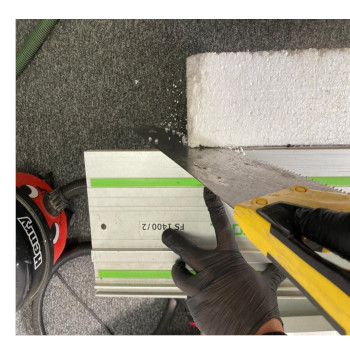
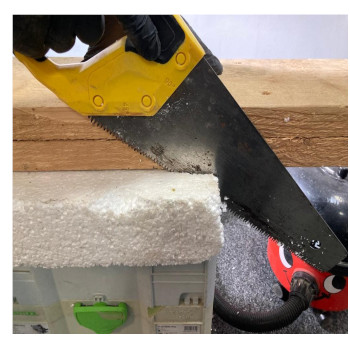
CUTTING POLYSTYRENE WITH HOT WIRE CUTTER
Those who install EPS regularly, using the hot wire cutter would be the best choice to cut EPS insulation. In fact, this is the quickest and neatest way to cut polystyrene. A hot wire cutter is an electrical tool used to cut polystyrene (EPS, XPS) foams and similar materials. Its thermal wire is not sharp as it does not cut the polystyrene mechanically. Instead, hot wire simply uses heat to melt the insulation, slicing through the boards to provide a perfect cut. If you are looking to buy a hot wire cutter it will cost you between £280-£360 as of 2023. This styrofoam polystyrene cutter offers smooth cuts, and leaves no debris! You can cut the foam board from any angle and craft into your desired shape.
CUTTING
Transfer measurement onto the polystyrene board. Apply slow, consistent pressure with the hot wire cutter along the desired cutting line. Moving too fast through the foam will cause the wire to snap. Use extreme caution when operating a hot wire cutter because the wires are extremely hot and can cause severe burns.
Advantages: incredibly precise, time-saving, adjustable to fit full-size insulation boards, produce the smoothest cuts, cuts and seals.
Disadvantages: have to be used in well ventilated spaces, it will require electricity, extremely hot and can cause burns.
Recommended thicknesses: 50mm-200mm.
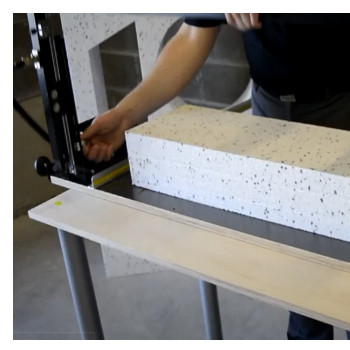
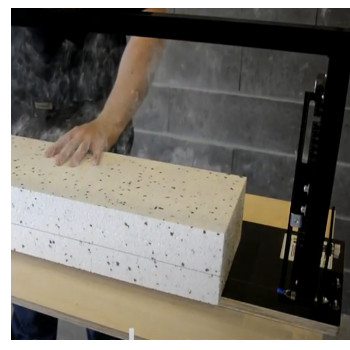
CUTTING POLYSTYRENE WITH THE LONG BLADE UTILITY KNIFE
Cutting polystyrene into any shape you want is easy, but you’ll need to choose the right tool for the right thickness. Long blade utility knife is ideal for cutting small, thin pieces of polystyrene, but is not recommended for pieces with a thickness of more than 30mm.
CUTTING
Use a sharp long blade knife, to penetrate the polystyrene in order to create a straight cutting line. Cut the polystyrene using small, steady movements. After the initial cut, run the craft knife through the foam several times, creating deeper cuts each time until the EPS is completely cut through from top to bottom. Break the polystyrene along the scored cutting line. For best results, situate the foam on a table or counter top with the scored line along the edge of the surface. Press down gently along the scored line to create a clean break. Dull blades will create rough, uneven slices in the foam.
Advantages: inexpensive, readily available, fairly intricate cutting, low cost.
Disadvantages: limited thickness, does not seal the styrofoam as it cuts, nowhere near as fast as the hot tools.
Recommended thicknesses: 10mm-30mm only.
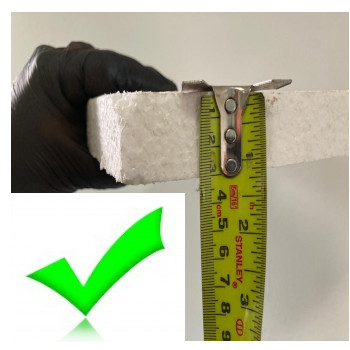
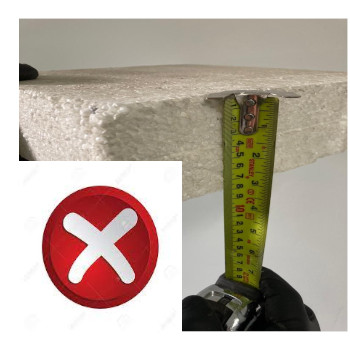
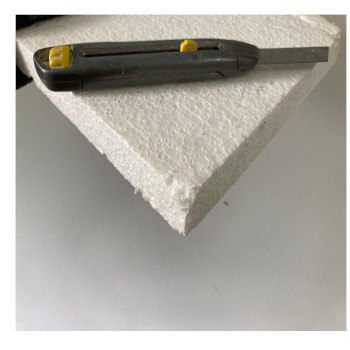
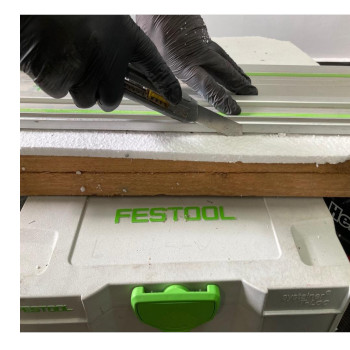
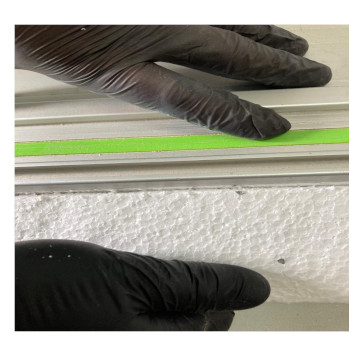

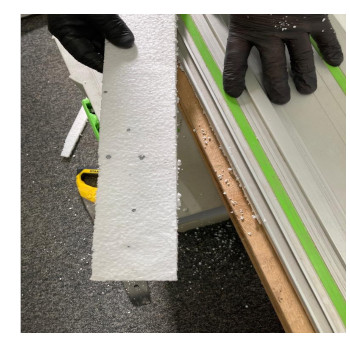
CUTTING POLYSTYRENE WITH A JIGSAW
Jigsaws are traditionally used for cutting wood, but it also can be used to create clean cuts in expanded polystyrene. Cutting polystyrene with electric tools has a small advantage over its manual cutting. Power tools have a power source that allows them to operate automatically and without human intervention. In fact, power tools help to perform simple tasks without requiring too much effort. While the method of cutting the boards with a handsaw is ideal for many situations, there are times when you can’t use it, such as when cutting a curve. So we need to look at more conventional tools like a Jigsaw. Jigsaws can be great for cutting insulation panels but it can be hard to make a straight cut with them. The secret is to use a straight edge. When using a jigsaw to cut styrofoam, wear a dust mask and safety goggles. Power saws can create a "foam dust" that is similar to sawdust, but can irritate the lungs if inhaled.
CUTTING
Transform measurements. Set a guide line in the right place to help you keep straight line. Put your jigsaw next to the guide line and try to cut at a low speed. For thicker polystyrene you will need a longer blade.
Advantages: easy to operate, speed.
Disadvantages: it may not give you clean results, it will require electricity.
Recommended thicknesses: 30mm-120mm.
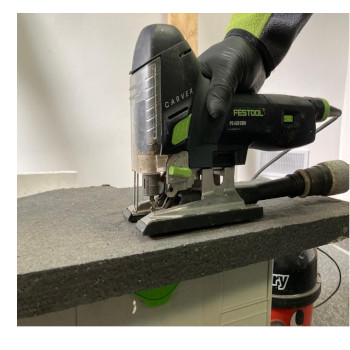
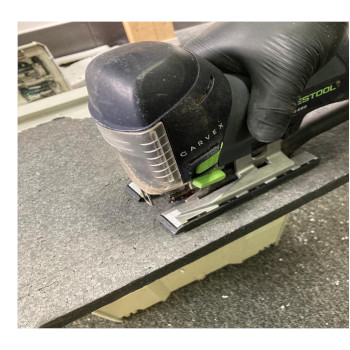
HOW TO CUT HOLES IN POLYSTYRENE?
When installing polystyrene on an exterior wall, you will need to cut holes both round and square. It is essential for the proper functioning of elements such as gas boxes or vents. The best method of cutting round holes in polystyrene is to use a router tool also called hole saw, jigsaw or knife. For square holes you will need a pad saw.
HOLE SAW
Hole saw is used for the precise cutting of holes in a variety of materials including polystyrene, styrofoam, xps, wood, osb, plywood, plasterboard and metal. Cutting with this tool in polystyrene is incredibly easy and does not require any force from us. We simply choose the diameter of the hole and with the help of a drill we drill to the desired depth or through the polystyrene.
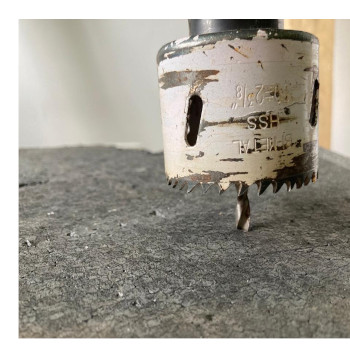
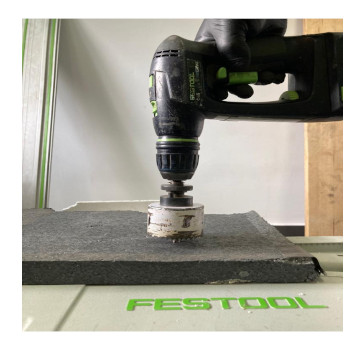

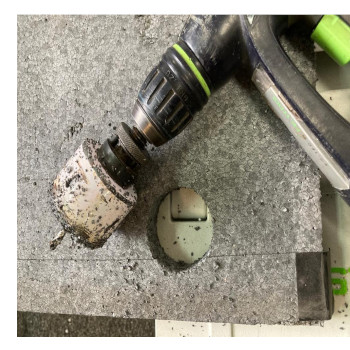
PAD SAW
Pad saw, also called keyhole saw, is long and narrow and often used for cutting small, awkward features in polystyrene. With its stiff, sharply pointed blade, it easily plunges through polystyrene, while its push-to-cut design eliminates breaking of EPS on the exposed side. Cutting can be continued to create the desired shape of the hole in the polystyrene.
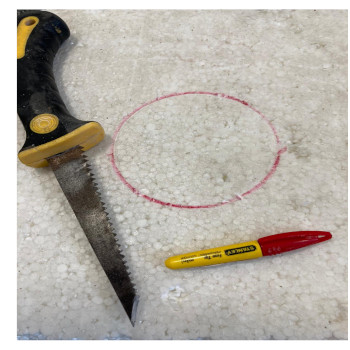
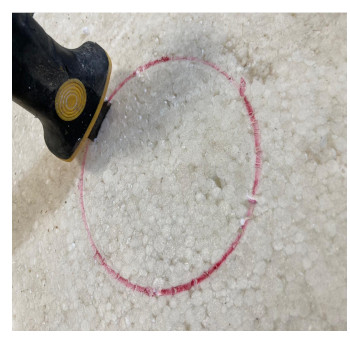
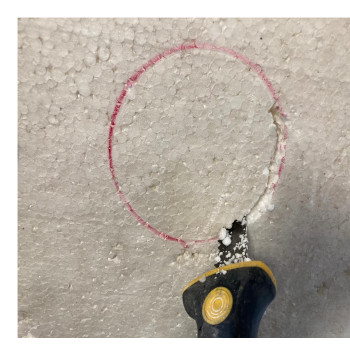
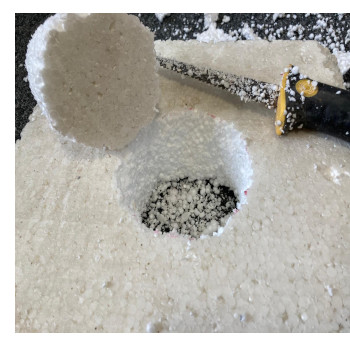
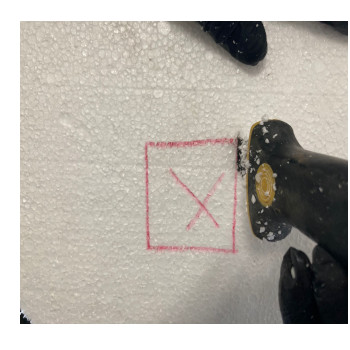
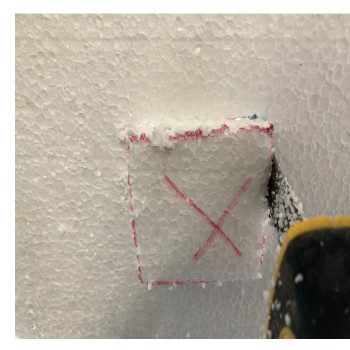
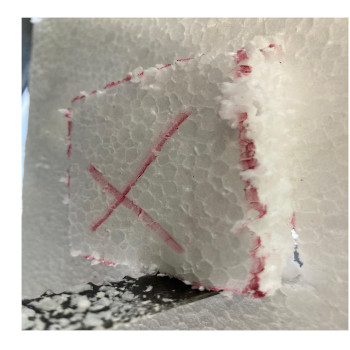
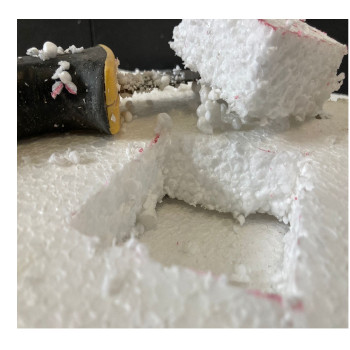
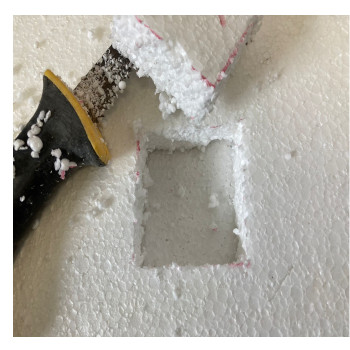
JIGSAW
Jigsaws are designed to make curved and scrolling lines. Cutting in a soft material such as polystyrene won't be a problem for such a powerful material. Simply stick the blade into the polystyrene and follow the marked line.
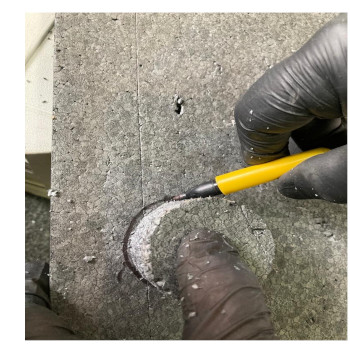
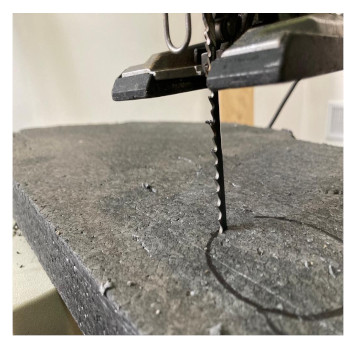
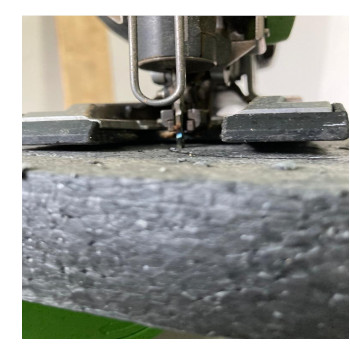
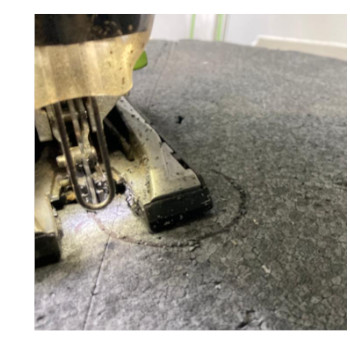
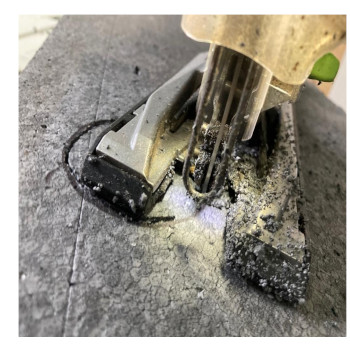
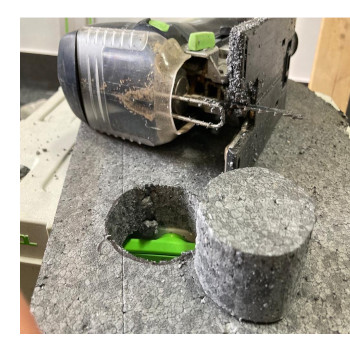
WHAT HAPPENS IF I CUT POLYSTYRENE TO BIG?
If you make those cuts too big you just simply end up rasping bits off for the next 20min until you can get polystyrene to fit which is very time consuming. You better off making it slightly too small.
WHAT HAPPENS IF I CUT POLYSTYRENE TO SHORT?
When working with EPS expanded polystyrene boards you should be always looking for a nice, tight fit, however if you cut your board too short - don’t panic! It is not the end of the world. By leaving gaps between insulation boards, you leave room for expanding foam to be filled with. This foam will further strengthen the joint of the boards. In this case you will have to buy such a foam, it should not cost you more than £18. Moreover, when the board is too short, you can glue a piece of extra board onto using this expanding foam.
HOW TO FINISH POLYSTYRENE EDGE?
When cutting polystyrene with a hand saw, you will quickly notice that its edge does not look as it should. This is where the rasp comes in handy. Rasp called grinder is an abrasive hand tool designed to rasping and smoothing EPS (Expanded Polystyrene) boards. Its coarse form of structure is used for coarsely shaping polystyrene which is later finished with a finishing render. The biggest disadvantage of this type of tool is the production of a large amount of electrifying polystyrene pieces. Therefore it is important to cut polystyrene carefully the first time. Each equation of polystyrene generates a huge mess on site and extends its installation time.

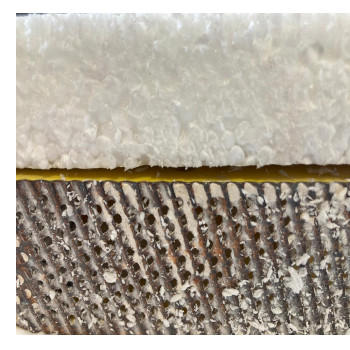
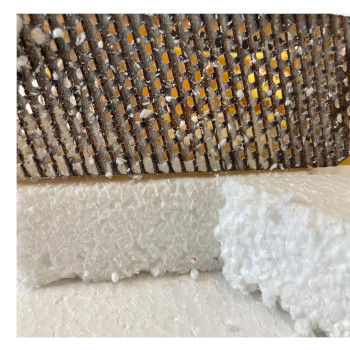
BIBLIOGRAPHY
Picture credits:
1. Youtube.com, Hotwire Systems OÜ, ‘Hot wire foam cutter HWS-Easy! / STYROFOAM CUTTER /’, mpeg, August 4, 2018, accessed September 21, 2022.
2. Building-companion, jpg, accessed September 20, 2022.
Related articles:
How to cut polystyrene insulation
DIFFERENCE BETWEEN EPS AND XPS INSULATION BOARDS
Feel the difference with XPS boards
Filcor lightweight structural fill
*All the information provided in the content published on Insulationgo blog is for informational and educational purposes only. Insulationgo LTD makes every effort to ensure the accuracy and timeliness of the content, but we do not assume any responsibility for any errors or omissions.
The information presented on this blog should not be considered as professional advice or a substitute for consulting relevant experts. Before making any purchase decisions or taking action based on the information presented here, it is strongly recommended to contact the product manufacturer directly to verify the details and ensure its suitability for your specific needs.
By using this blog, you acknowledge and agree that Insulationgo LTD shall not be held liable for any damages, losses, or inconveniences arising from the use or reliance on the information provided herein. This limitation of liability applies to all users of the blog, including but not limited to visitors, readers, and subscribers.










































































































